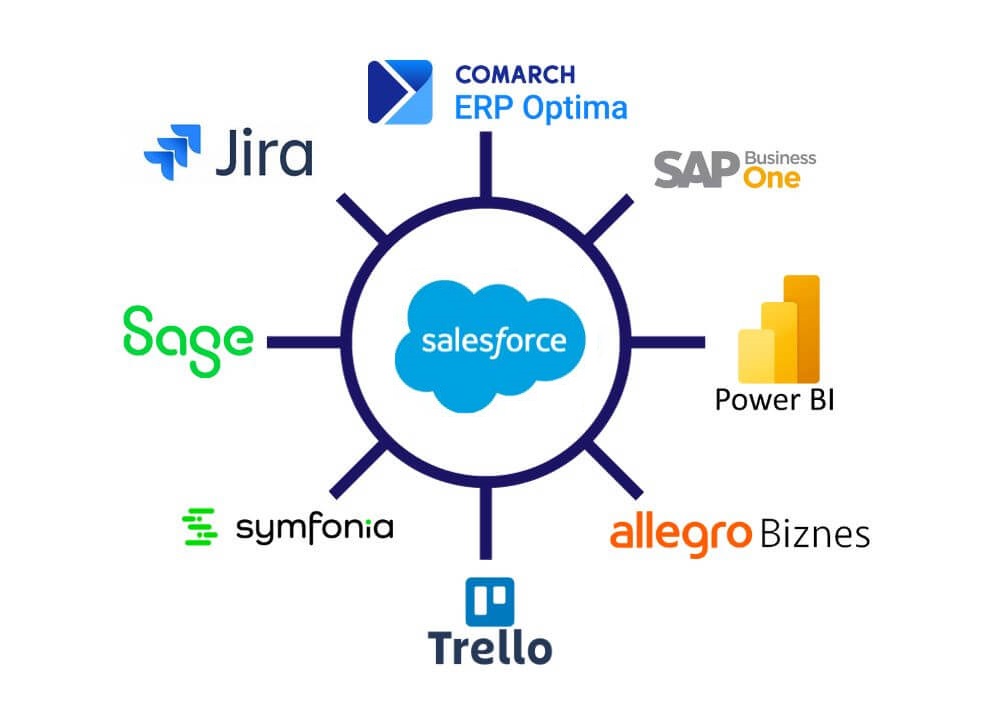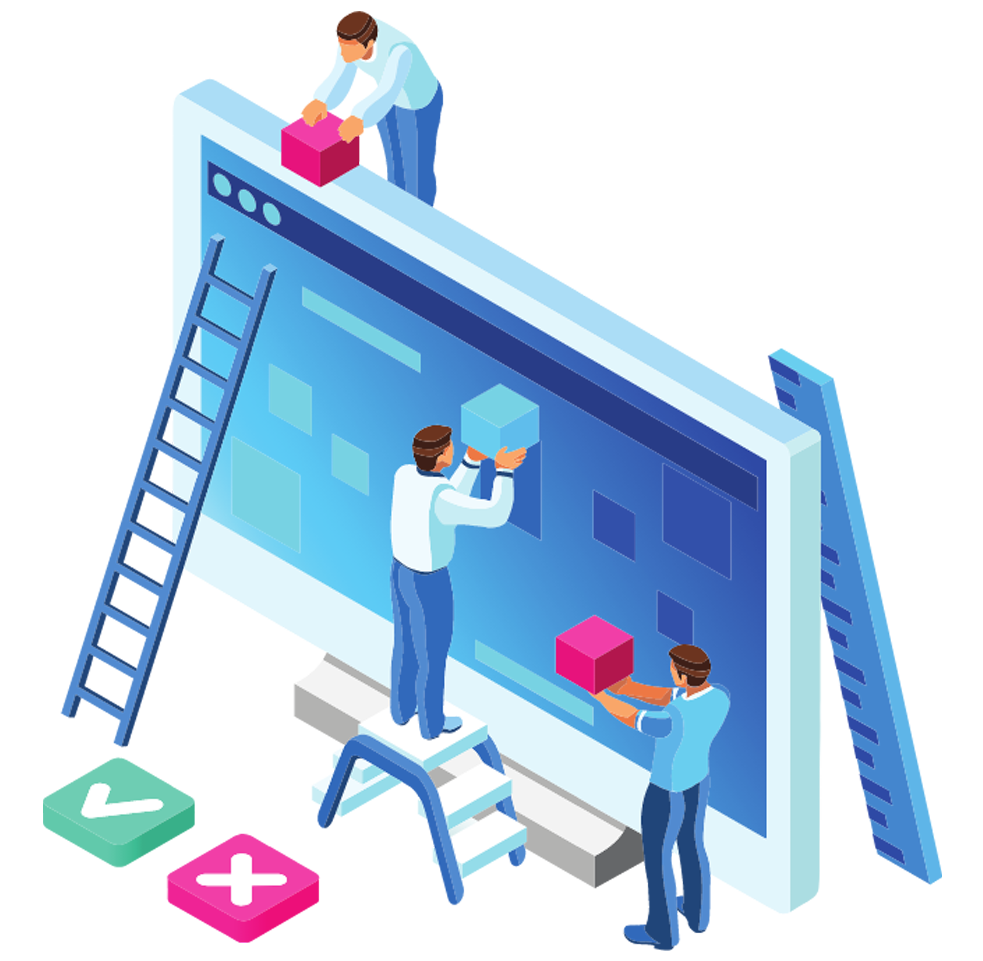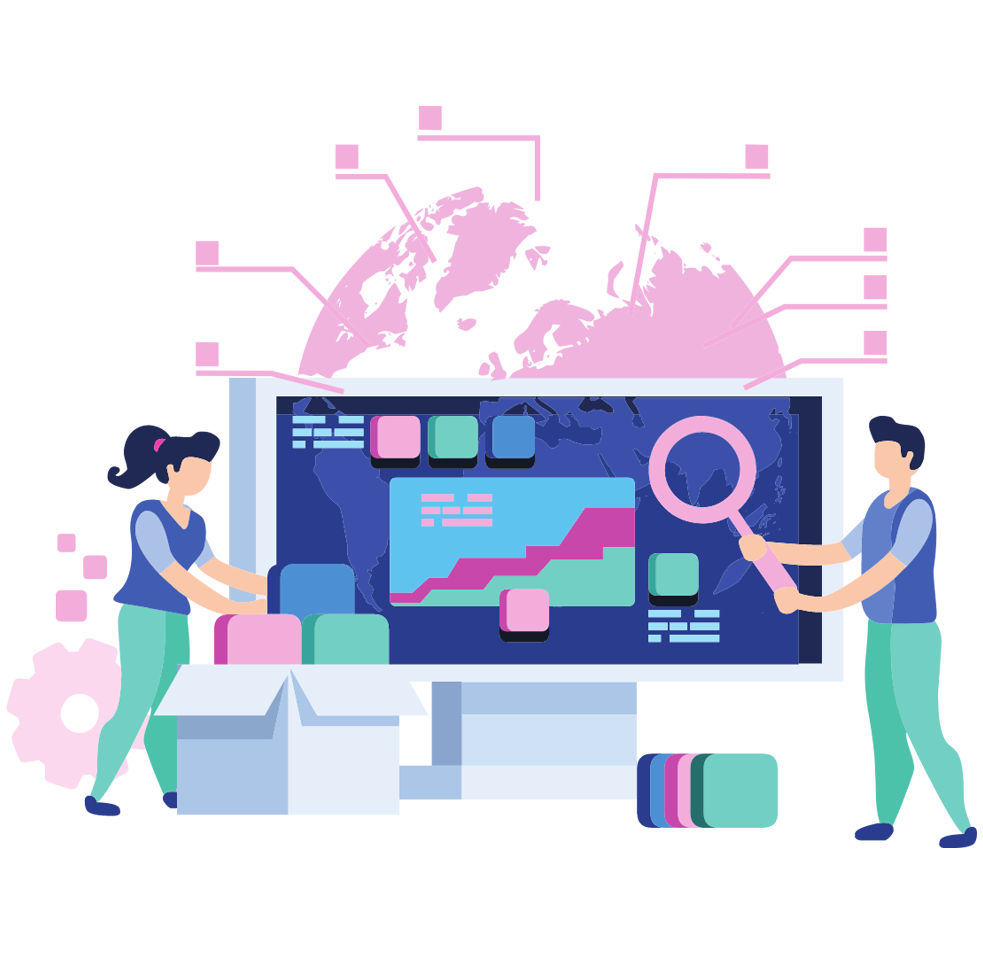IT systems integration is the process of combining different programs, applications, or IT tools into a cohesive whole that allows them to work together and exchange information. It can be compared to building bridges between islands so that people can move freely from one place to another.
In a business context, integrating IT systems allows different computer programs to collaborate and share data and functionality. For example, if a company has separate systems for customer service, finance, or warehouse, integration will make customer data automatically transferred to the financial or warehouse system. This will save the company time and avoid errors due to manual transcription of information.
As a Salesforce partner, we focus on integrating solutions from this particular ecosystem with various IT tools used in our clients’ companies.
What tools can you integrate with the Salesforce platform?
Accounting systems, ERP, project management solutions – whatever tools you might think of, they can probably be integrated into the Salesforce ecosystem. Only the method of integration remains an open question. Here are the types of software you will integrate the Salesforce platform with, along with examples of specific systems.
Enterprise Resource Planning (ERP) systems
Comarch ERP: a local ERP system offering solutions for various industries.
SAP Business One: an international ERP system often used by medium-sized and larger companies.
Microsoft Dynamics 365 Business Central: an ERP platform integrated with other Microsoft tools.
Project Management Tools
Jira: a popular platform for project and task management, especially in Agile methodologies.
Trello: a simple application for organizing and tracking tasks.
MS Project: a Microsoft tool for advanced project management.

Accounting and Finance Systems
Symfonia: an accounting and finance system, offering various modules.
Subiekt GT: a sales, warehouse, and financial management tool.
Datev: an IT solution for Polish-German companies and auditors.
Fortnox: a financial and accounting program popular in the Nordic countries.
Data Analysis Tools
Power BI: Microsoft’s platform for creating interactive reports and visualizations.
Until recently, this would have included Tableau, but this data visualization and business analytics tool has been part of the Salesforce ecosystem for some time.
Human Resource (HR) Management Tools
Talentsoft: a system for HR management and employee development.
Sage HR: a staffing, payroll, and HR management tool.
E-commerce
Allegro Business: an e-commerce platform for businesses on the popular Polish site Allegro.
PrestaShop: open source e-commerce software.
In addition, Salesforce integrates with Google Workspace (formerly G Suite); Zapier, Pipedrive: Freshdesk; eMag, and many other IT solutions.
Open system – what does this mean in terms of Salesforce integration with your IT tools?
When we say a system is “open,” it means that the Salesforce platform uses application programming interfaces (APIs) that allow other systems or applications to communicate with Salesforce and easily exchange data and information.
Essentially, an open system is one that provides public interfaces and protocols, which allows other systems or applications to connect to it, transfer data, and use its functionality. In the case of Salesforce, being “open” means that developers can use APIs to integrate with the Salesforce platform. You can create custom applications that communicate with Salesforce, synchronize data between different systems, and create new features based on existing data in Salesforce.
Here’s an example:
Your company wants to integrate its website with the Salesforce platform so that customer data and contact form submissions are automatically downloaded into Salesforce. This platform is an open system, meaning it provides public APIs that allow your developers to access your CRM. Developers can use the APIs to create a custom application or script that collects data from forms on your website and sends it to Salesforce.
With this integration, customer and request information will be automatically updated in Salesforce without the need for manual data entry. This allows:
- managing customer data more effectively,
- monitoring contacts and requests, and
- using the full functionality of Salesforce to serve customers better and make better business decisions.
With its open approach, Salesforce becomes a frequently used focal point in the ecosystem of business tools, ensuring data and process consistency between different applications.
What are the methods for integrating Salesforce with the solutions used in your company?
Salesforce integration includes a variety of approaches and technologies that allow seamless interaction between the Salesforce platform and other systems in your organization.
You can integrate Salesforce in several ways:
- via API;
- using ETL tools;
- via webhook mechanisms;
- via the so-called integration bus
- based on queue mechanisms.
Each of these types has its own uses and benefits – you can learn more here.
Salesforce integration – what kind of data flow does your company need?
Data flow, in the context of Salesforce integration, refers to the process of transferring, synchronizing, or forwarding data between systems, or applications. There are two basic types of data flow: bidirectional and unidirectional.
Bidirectional (bidirectional) data flow:
If bidirectional flow is used, data can flow back and forth between systems. That is, not only does one system send data to another, but the second system can also pass data back to the first. This is particularly useful when systems need to collaborate and exchange information in real-time.
An example would be integration between CRM and financial systems, where changes in customer data in the CRM system can affect financial processes and financial data can be passed back to the CRM.
Unidirectional (unidirectional) data flow:
In unidirectional flow, data flows in only one direction. This means that one system regularly passes data to the other system, but there is no need to pass data back.
Examples include passing customer data to an accounting or ERP system without having to pass it back and sending order or invoice data to Salesforce to get a 360-degree view of a particular customer – without having to edit and pass it back.
When determining the type of data flow in a Salesforce integration, it is important to understand the business requirements and goals of the integration. Do you need the data to be updated in both systems? Is it sufficient for one party to send data to the other? The answers to these questions will help determine the right type of data flow for the integration.

Which of the integrated systems should be dominant?
Determining which of your company’s systems should be dominant depends on various factors. Here are some areas to look at before making a decision.
Business process analysis: understanding what business processes need to be integrated and which systems play a key role in those processes. Which system is more significant from a business operations perspective?
Business strategy: clarify what goals the organization wants to achieve through integration. Is it about better customer management, efficient order processing, or other goals?
Key data: identifying the most significant data for the company. If the data in one system is “more significant,” it probably means that this is the system that should be dominant.
Functionality and flexibility: assessing which platform offers functionality more in line with the organization’s requirements. Which platform is more flexible and adaptable to the company’s needs?
Team and resources: understanding what team or resources are available to manage and maintain the integration on a given system. Which platform will be supported more efficiently by the IT team?

Future expansions: predict which platform can be more easily expanded in the future to accommodate possible changes in the organization.
Stakeholder Consultation: take into account the opinions of various stakeholders, both from IT and other business departments. Joint decision-making can help reach a consensus.
An analysis based on the above steps can help you make the right decision and maximize the return on your investment in integrating Salesforce with your company’s systems.
Summary
Salesforce integration helps streamline business operations, ensure consistency between applications, and eliminate the need for manual data entry. However, it is quite complex – so it is worth entrusting it to a trusted partner. If you are considering Salesforce integration in your organization, contact me! I will answer your questions and conduct an initial quote for your project!








































